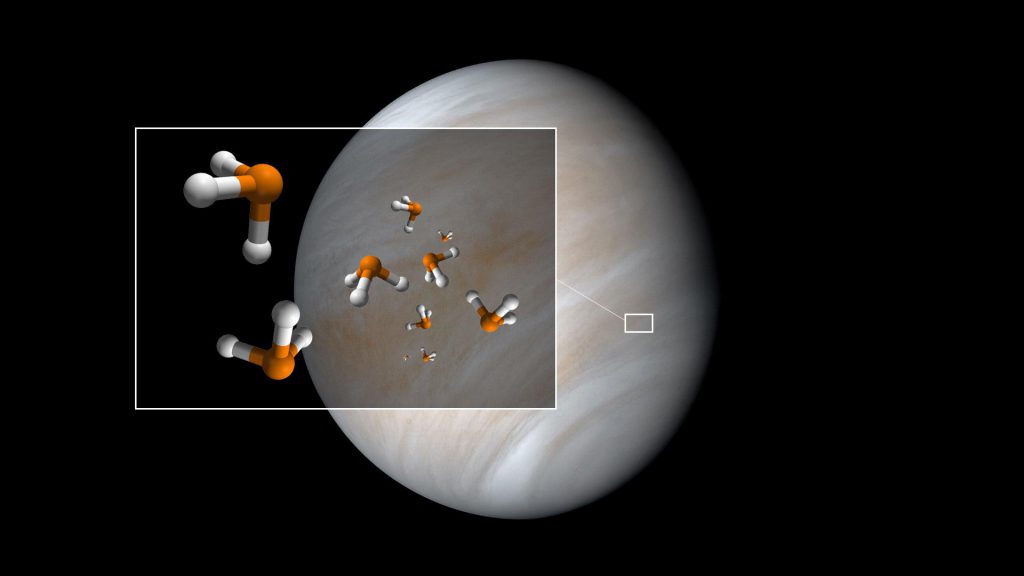Venusian Phosphine: A Call for Further Research
Written by Sarah Treadwell
If you have never heard of phosphine before, be prepared to see it as the hot new buzz word in planetary science.
A press release by the Royal Astronomical Society revealed that the presence of phosphine was detected in the atmosphere of Venus by a team of researchers, including one of our scientists from BMSIS. While phosphine can be made in the laboratory and has been previously detected on Jupiter and Saturn, there’s no currently known process for producing it in the atmosphere of Venus.
Phosphine is a rare gas naturally produced by some microorganisms on Earth. Life that makes phosphine on Earth is typically found in swamps and lake bottoms, as well as in the intestines of certain animals (environments that are known as anoxic, as they have no oxygen gas present). Phosphine can be artificially created, but it is not seen anywhere else in nature on Earth except when produced by these microorganisms.

We spoke with Dr. Sukrit Ranjan, a researcher involved with the newly released publication and scientist affiliated with the Blue Marble Space Institute of Science about the finding.
“We want to make sure (phosphine) is really there,” says Sukrit. “Maybe there’s some other molecule whose features we don’t know about yet that happens to absorb wavelengths at the same place phosphine does. I think it’s worth directing the full scrutiny of the scientific process. We’ve done the best we could with the data that we have.”
The focus on studying Venus for the potential of life has been limited. Our infamous rocky neighbor has a reputation of being particularly inhospitable. On its surface, Venus is a scorching 900 degrees Fahrenheit, with a crushing atmosphere. The surface pressure on Venus is 92 times what we have at sea level on Earth!
However, scientists speculate that a much cooler Venus, maybe even with oceans, may have existed billions of years ago and also with the capacity to support life. As the planet began to warm, they theorize, life could have evolved to move upward to escape the warming planet. And if still present, this life could leave trace clues of its presence, called biosignatures.
A biosignature is a natural product or phenomenon that can be linked to a biological origin. It can be a predictive tool to indicate potential life on other planets and moons. Phosphine is a significant biosignature due to the difficulties of producing it, and there’s no known reason for it to be detected on Venus.
“If we do have phosphine on Venus, that’s already really interesting,” remarks Sukrit. “That’s already really saying we don’t understand the atmospheric photochemistry very well or that there’s something anomalous going on.”
The discovery of phosphine in the cloudy Vesuvian atmosphere comes as a surprise, one that could potentially signify the presence of life on Venus. But to be clear, no definitive claims have been made to discovering life on Venus. The discovery serves as a call to action to begin more research.
“I’m really happy that people are excited about it,” clarifies Sukrit. “Excited in the sense that this is something weird and unexpected to find. It may mean the team has made a mistake, it may mean there are some unknown physics or chemistry. And those are the objects we should look at first.”
Comparing similar speculations and controversy of the presence of methane on Mars as evidence for life, Sukrit ends by stating, “I would say that this is a conclusion of nothing and mostly just a call for future work.”

Sarah Treadwell is a student and communicator of science. She has a passion for sidewalk astronomy and a curiosity for learning how the universe works. She is currently a Research Associate with BMSIS, communicating topics in Earth and space science. Learn more about her work at Space Case Sarah.
